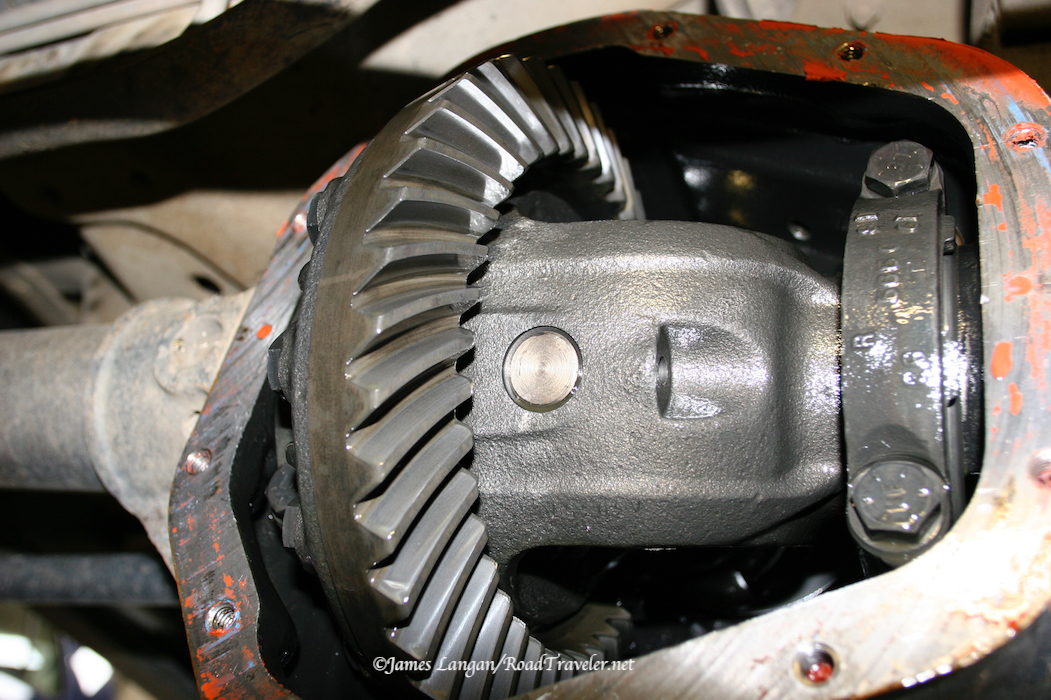
Question and backgrounder
Our 2001 Ford 7.3L Power Stroke Diesel engine has been modified, mostly for better efficiency, with new injectors, fuel and oil pump upgrades, intake and exhaust mods, and a tuner. Exhaust gas temperature (EGT) is not currently a problem. The truck has a 6-speed manual transmission, with an aftermarket South Bend Clutch. We have a Four Wheel Campers popup slide-in, and sometimes tow a trailer through mountainous terrain. The truck runs great, we’re just trying to add a bit more power while remaining practical. Would you upgrade the turbo or change from the original 3.73:1 gears to a lower 4.10:1 ratio?
Answer and questions
Do you know how much power/torque you are making? What is the gross weight of your 2001 Ford Super Duty and Four Wheel Camper loaded for most trips? How much weight and wind load does your trailer add?
Sounds like a turbo could complement your previous mods if you are needing more air, but if the fuel is burning well and completely it might be unnecessary. How many miles on your current turbo? Turbo lifespan may be a consideration?
Lower gearing multiplies torque. I’m a fan of lower gearing in general, particularly on gasoline-powered rigs, but moving from 3.73:1 to 4.10:1 gears is not a huge change for the cost of the surgery. Only you can determine if the added performance will be worthwhile. You will likely lose some fuel economy with lower gears.

If overall gearing is too low—as was the case with my ’96 F-350 with factory 4.10:1 gears, only 33” tires, and a 0.77:1 top cog—then overdrive may be required to maintain comfortable highway rpm when transmission sympathy would dictate using direct. However, that may not be a concern with your setup.
Is the top ratio of your ZF-S6 tranny 0.72:1? If so, that’s rather tall for a manual gearbox, and you probably have plenty of overdrive combined with 35” tall tires, depending on your highway speeds. Spending some time in 5th/direct at higher road speeds with your current gearing, as well as playing with some online gearing calculators, should be informative.
Do you currently downshift out of overdrive when climbing big hills? If so, is direct/5th enough for most grades unless the road requires lower speeds? Don’t be overly hesitant to grab a lower gear and spin the engine a little faster (while keeping an eye on the gauges), which reduces the load on the tranny and clutch. You might have all the lower gearing you need at your fingertips with your transmission’s underdrive gears. Unless you are wanting to avoid downshifting, are using all the power you already have, and/or would like to accelerate more quickly.
Gas vs. Diesel
It’s worth noting that making more torque and power with a turbodiesel engine is generally much easier, less expensive, and less invasive than with gasoline-powered platforms. Lower gearing for gas trucks can provide a very satisfying boost in felt torque and acceleration compared to similar money spent on engine modifications. I’ve chosen to add lower, 4.88:1 gears to three gas engine rigs, one Jeep and two Toyotas, but have yet to re-gear a diesel truck.
James Langan
Copyright James Langan/RoadTraveler All Rights Reserved
